-
EXECUTIVE SUMMARY
-
MARKET INTRODUCTION
-
Market Definition
- Research Objectives
- Assumptions &
-
2.2.
-
Scope of the Study
-
Limitations
-
Market Structure
-
MARKET RESEARCH METHODOLOGY
-
3.1.
-
Research Process
-
Secondary Research
-
Primary Research
-
3.4.
-
Forecast Model
-
MARKET LANDSCAPE
-
Supply Chain Analysis
- Manufacturers/Producers
- Distributors/Retailers/Wholesalers/E-Commerce
- End Users
-
4.1.1.
-
Raw Material Suppliers
-
Porter’s Five Forces Analysis
- Threat
- Bargaining Power of Buyers
- Bargaining Power
- Threat of Substitutes
- Internal Rivalry
-
of New Entrants
-
of Suppliers
-
5.
-
MARKET DYNAMICS OF THE GLOBAL HAND SANITIZERS MARKET
-
Introduction
-
5.2.
-
Drivers
-
Restraints
-
Opportunities
-
Challenges
-
6.
-
GLOBAL HAND SANITIZERS MARKET, BY PRODUCT TYPE
-
Introduction
- Market Estimates & Forecast, 2023–2032
- Market
-
6.2.
-
Gels
-
Estimates & Forecast, by Region, 2023–2032
-
Liquids
- Market Estimates &
-
6.3.1.
-
Market Estimates & Forecast, 2023–2032
-
Forecast, by Region, 2023–2032
-
Sprays
- Market Estimates
- Market Estimates & Forecast, by
-
& Forecast, 2023–2032
-
Region, 2023–2032
-
Others
- Market Estimates & Forecast,
- Market Estimates & Forecast, by Region, 2023–2032
-
GLOBAL HAND SANITIZERS MARKET, BY END USER
-
Introduction
- Market Estimates & Forecast, 2023–2032
-
7.2.
-
Household
-
7.2.2.
-
Market Estimates & Forecast, by Region, 2023–2032
-
Commercials/Institutionals
- Market Estimates & Forecast, 2023–2032
- Market Estimates
-
& Forecast, by Region, 2023–2032
-
Hospitals & Health Centers
- Market Estimates & Forecast, 2023–2032
- Market Estimates
-
& Forecast, by Region, 2023–2032
-
GLOBAL HAND SANITIZERS MARKET,
-
BY DISTRIBUTION CHANNEL
-
Introduction
-
Store-Based
- Market Estimates &
- Supermarkets & Hypermarkets
- Convenience Stores
- Specialty Stores/Pharmacies
- Others
-
8.2.1.
-
Market Estimates & Forecast, 2023–2032
-
Forecast, by Region, 2023–2032
-
Estimates & Forecast, by Region, 2023–2032
-
Estimates & Forecast, by Region, 2023–2032
-
Estimates & Forecast, by Region, 2023–2032
-
8.2.6.1.
-
Market Estimates & Forecast, 2023–2032
-
& Forecast, by Region, 2023–2032
-
Non-Store-Based
- Market Estimates &
-
8.3.1.
-
Market Estimates & Forecast, 2023–2032
-
Forecast, by Region, 2023–2032
-
GLOBAL HAND SANITIZERS MARKET, BY REGION
-
Introduction
-
North America
- Market Estimates & Forecast,
- Market Estimates & Forecast, by Product Type, 2023–2032
- Market Estimates & Forecast, by End User, 2023–2032
-
9.2.4.
-
Market Estimates & Forecast, by Distribution Channel, 2023–2032
-
9.2.5.
-
Market Estimates & Forecast, by Country, 2023–2032
-
9.2.6.1.
-
US
-
Market Estimates & Forecast, by Product Type, 2023–2032
-
9.2.6.2.
-
Market Estimates & Forecast, by End User, 2023–2032
-
Estimates & Forecast, by Distribution Channel, 2023–2032
-
9.2.7.3.
-
Market
-
Canada
-
Market Estimates & Forecast, by Product Type, 2023–2032
-
Market Estimates & Forecast, by End User, 2023–2032
-
Market Estimates & Forecast, by Distribution Channel, 2023–2032
-
9.2.8.
-
Mexico
-
9.2.8.3.
-
Market Estimates & Forecast, by Product Type, 2023–2032
-
Market Estimates & Forecast, by End User, 2023–2032
-
Market Estimates & Forecast, by Distribution Channel, 2023–2032
-
9.3.
-
Europe
-
9.3.2.
-
Market Estimates & Forecast, 2023–2032
-
Market Estimates & Forecast, by Product Type, 2023–2032
-
Estimates & Forecast, by End User, 2023–2032
-
& Forecast, by Distribution Channel, 2023–2032
-
& Forecast, by Country, 2023–2032
-
Estimates & Forecast, by Product Type, 2023–2032
-
Estimates & Forecast, by End User, 2023–2032
-
& Forecast, by Distribution Channel, 2023–2032
-
9.3.7.1.
-
Market
-
Market Estimates
-
Market Estimates
-
Germany
-
Market
-
Market
-
Market Estimates
-
UK
-
Market Estimates & Forecast, by Product Type, 2023–2032
-
9.3.7.2.
-
Market Estimates & Forecast, by End User, 2023–2032
-
Estimates & Forecast, by Distribution Channel, 2023–2032
-
9.3.8.3.
-
Market
-
France
-
Market Estimates & Forecast, by Product Type, 2023–2032
-
Market Estimates & Forecast, by End User, 2023–2032
-
Market Estimates & Forecast, by Distribution Channel, 2023–2032
-
9.3.9.
-
Spain
-
9.3.9.3.
-
Market Estimates & Forecast, by Product Type, 2023–2032
-
Market Estimates & Forecast, by End User, 2023–2032
-
Market Estimates & Forecast, by Distribution Channel, 2023–2032
-
9.3.10.
-
Italy
-
9.3.10.3.
-
Market Estimates & Forecast, by Product Type, 2023–2032
-
Market Estimates & Forecast, by End User, 2023–2032
-
Market Estimates & Forecast, by Distribution Channel, 2023–2032
-
9.3.11.
-
Rest of Europe
-
9.4.3.
-
Market Estimates & Forecast, by Product Type,
-
Market Estimates & Forecast, by End User, 2023–2032
-
Market Estimates & Forecast, by Distribution Channel, 2023–2032
-
Asia-Pacific
- Market Estimates & Forecast, 2023–2032
- Market Estimates & Forecast, by Product Type, 2023–2032
-
Market Estimates & Forecast, by End User, 2023–2032
-
Estimates & Forecast, by Distribution Channel, 2023–2032
-
Estimates & Forecast, by Country, 2023–2032
-
9.4.6.1.
-
Market
-
Market
-
China
-
Market Estimates & Forecast, by Product Type, 2023–2032
-
9.4.6.2.
-
Market Estimates & Forecast, by End User, 2023–2032
-
Estimates & Forecast, by Distribution Channel, 2023–2032
-
9.4.7.3.
-
Market
-
Japan
-
Market Estimates & Forecast, by Product Type, 2023–2032
-
Market Estimates & Forecast, by End User, 2023–2032
-
Market Estimates & Forecast, by Distribution Channel, 2023–2032
-
9.4.8.
-
India
-
9.4.8.3.
-
Market Estimates & Forecast, by Product Type, 2023–2032
-
Market Estimates & Forecast, by End User, 2023–2032
-
Market Estimates & Forecast, by Distribution Channel, 2023–2032
-
9.4.9.
-
Australia & New Zealand
-
Type, 2023–2032
-
& Forecast, by Product Type, 2023–2032
-
& Forecast, by End User, 2023–2032
-
Forecast, by Distribution Channel, 2023–2032
-
& Forecast, by Product Type, 2023–2032
-
Forecast, by End User, 2023–2032
-
by Distribution Channel, 2023–2032
-
by Region, 2023–2032
-
& Forecast, by Product Type, 2023–2032
-
& Forecast, by End User, 2023–2032
-
Forecast, by Distribution Channel, 2023–2032
-
9.5.7.1.
-
Market Estimates & Forecast, by Product
-
Market Estimates & Forecast, by End User,
-
Market Estimates & Forecast, by Distribution Channel,
-
Rest of Asia-Pacific
-
Market Estimates
-
Market Estimates
-
Market Estimates &
-
Rest of the World
- Market Estimates & Forecast, 2023–2032
- Market Estimates
- Market Estimates &
- Market Estimates & Forecast,
- Market Estimates & Forecast,
- South America
- Middle East
-
Market Estimates & Forecast, by Product Type, 2023–2032
-
9.5.7.2.
-
Market Estimates & Forecast, by End User, 2023–2032
-
Estimates & Forecast, by Distribution Channel, 2023–2032
-
9.5.8.3.
-
Market
-
Africa
-
Market Estimates & Forecast, by Product Type, 2023–2032
-
Market Estimates & Forecast, by End User, 2023–2032
-
Market Estimates & Forecast, by Distribution Channel, 2023–2032
-
10.
-
COMPETITIVE LANDSCAPE
-
Introduction
-
Market Strategy
-
10.3.
-
Key Development Analysis
-
(Expansions/Mergers & Acquisitions/Joint Ventures/New
-
Product Developments/Agreements/Investments)
-
COMPANY PROFILES
-
11.1.
-
Reckitt Benckiser Group Plc
-
Updates
-
Segment Overview
-
11.2.6.
-
SWOT Analysis
-
11.3.4.
-
Key Strategies
-
11.4.
-
L Brands
-
11.4.3.
-
Product/Business Segment Overview
-
Overview
-
Updates
-
Son, Inc.
-
11.7.3.
-
Product/Business Segment Overview
-
11.8.4.
-
Key Strategies
-
11.9.
-
GOJO Industries, Inc.
-
11.9.5.
-
Key Developments
-
11.10.1.
-
Company Overview
-
Segment Overview
-
Company Overview
-
Financial
-
Product/Business Segment Overview
-
Key Strategies
-
Key Developments
-
SWOT Analysis
-
Unilever Group
- Company Overview
- Financial Updates
- Product/Business
- Key Strategies
- Key Developments
-
Smith & Nephew plc
- Company Overview
- Financial Updates
- Product/Business Segment Overview
- Key Developments
- SWOT Analysis
- Company Overview
- Financial Updates
- Key Strategies
- Key Developments
- SWOT Analysis
-
Procter & Gamble Co.
- Company
- Financial Updates
- Product/Business Segment Overview
- Key Strategies
- Key Developments
- SWOT Analysis
-
Kimberly-Clark Corporation
- Company Overview
- Financial
- Product/Business Segment Overview
- Key Strategies
- Key Developments
- SWOT Analysis
-
S. C. Johnson &
- Company Overview
- Financial Updates
- Key Strategies
- Key Developments
- SWOT Analysis
-
Edgewell Personal Care
- Company Overview
- Financial Updates
- Product/Business Segment Overview
- Key Developments
- SWOT Analysis
- Company Overview
- Financial Updates
- Product/Business Segment Overview
- Key Strategies
- SWOT Analysis
-
PAUL HARTMANN AG
- Financial Updates
- Product/Business
- Key Strategies
- Key Developments
- SWOT Analysis
-
CONCLUSION
-
-
LIST OF TABLES
-
Global Hand Sanitizers Market, by Region, 2023–2032 (USD Million)
-
Global Hand Sanitizers Market, by Product Type, 2023–2032 (USD Million)
-
Global Hand Sanitizers Market, by End User, 2023–2032 (USD Million)
-
Global Hand Sanitizers Market, by Distribution Channel, 2023–2032
-
(USD Million)
-
North America: Hand Sanitizers Market, by Country, 2023–2032
-
(USD Million)
-
North America: Hand Sanitizers Market, by Product Type,
-
North America: Hand Sanitizers Market,
-
by End User, 2023–2032 (USD Million)
-
North America: Hand Sanitizers
-
Market, by Distribution Channel, 2023–2032 (USD Million)
-
US:
-
Hand Sanitizers Market, by Product Type, 2023–2032 (USD Million)
-
TABLE
-
US: Hand Sanitizers Market, by End User, 2023–2032 (USD Million)
-
TABLE
-
US: Hand Sanitizers Market, by Distribution Channel, 2023–2032 (USD Million)
-
Canada: Hand Sanitizers Market, by Product Type, 2023–2032 (USD
-
Million)
-
Canada: Hand Sanitizers Market, by End User, 2023–2032
-
(USD Million)
-
Canada: Hand Sanitizers Market, by Distribution Channel,
-
Mexico: Hand Sanitizers Market, by Product
-
Type, 2023–2032 (USD Million)
-
Mexico: Hand Sanitizers Market,
-
by End User, 2023–2032 (USD Million)
-
Mexico: Hand Sanitizers
-
Market, by Distribution Channel, 2023–2032 (USD Million)
-
Europe:
-
Hand Sanitizers Market, by Country, 2023–2032 (USD Million)
-
TABLE 19
-
Europe: Hand Sanitizers Market, by Product Type, 2023–2032 (USD Million)
-
Europe: Hand Sanitizers Market, by End User, 2023–2032 (USD Million)
-
Europe: Hand Sanitizers Market, by Distribution Channel, 2023–2032
-
(USD Million)
-
Germany: Hand Sanitizers Market, by Product Type, 2023–2032
-
(USD Million)
-
Germany: Hand Sanitizers Market, by End User, 2023–2032
-
(USD Million)
-
Germany: Hand Sanitizers Market, by Distribution Channel,
-
France: Hand Sanitizers Market, by Product
-
Type, 2023–2032 (USD Million)
-
France: Hand Sanitizers Market,
-
by End User, 2023–2032 (USD Million)
-
France: Hand Sanitizers
-
Market, by Distribution Channel, 2023–2032 (USD Million)
-
Italy:
-
Hand Sanitizers Market, by Product Type, 2023–2032 (USD Million)
-
TABLE
-
Italy: Hand Sanitizers Market, by End User, 2023–2032 (USD Million)
-
Italy: Hand Sanitizers Market, by Distribution Channel, 2023–2032
-
(USD Million)
-
Spain: Hand Sanitizers Market, by Product Type, 2023–2032
-
(USD Million)
-
Spain: Hand Sanitizers Market, by End User, 2023–2032
-
(USD Million)
-
Spain: Hand Sanitizers Market, by Distribution Channel,
-
UK: Hand Sanitizers Market, by Product
-
Type, 2023–2032 (USD Million)
-
UK: Hand Sanitizers Market, by
-
End User, 2023–2032 (USD Million)
-
UK: Hand Sanitizers Market,
-
by Distribution Channel, 2023–2032 (USD Million)
-
Rest of Europe:
-
Hand Sanitizers Market, by Product Type, 2023–2032 (USD Million)
-
TABLE
-
Rest of Europe: Hand Sanitizers Market, by End User, 2023–2032 (USD Million)
-
Rest of Europe: Hand Sanitizers Market, by Distribution Channel, 2023–2032
-
(USD Million)
-
Asia-Pacific: Hand Sanitizers Market, by Country, 2023–2032
-
(USD Million)
-
Asia-Pacific: Hand Sanitizers Market, by Product Type,
-
Asia-Pacific: Hand Sanitizers Market,
-
by End User, 2023–2032 (USD Million)
-
Asia-Pacific: Hand Sanitizers
-
Market, by Distribution Channel, 2023–2032 (USD Million)
-
China:
-
Hand Sanitizers Market, by Product Type, 2023–2032 (USD Million)
-
TABLE
-
China: Hand Sanitizers Market, by End User, 2023–2032 (USD Million)
-
China: Hand Sanitizers Market, by Distribution Channel, 2023–2032
-
(USD Million)
-
India: Hand Sanitizers Market, by Product Type, 2023–2032
-
(USD Million)
-
India: Hand Sanitizers Market, by End User, 2023–2032
-
(USD Million)
-
India: Hand Sanitizers Market, by Distribution Channel,
-
Japan: Hand Sanitizers Market, by Product
-
Type, 2023–2032 (USD Million)
-
Japan: Hand Sanitizers Market,
-
by End User, 2023–2032 (USD Million)
-
Japan: Hand Sanitizers
-
Market, by Distribution Channel, 2023–2032 (USD Million)
-
Rest
-
of Asia-Pacific: Hand Sanitizers Market, by Product Type, 2023–2032 (USD Million)
-
Rest of Asia-Pacific: Hand Sanitizers Market, by End User, 2023–2032
-
(USD Million)
-
Rest of Asia-Pacific: Hand Sanitizers Market, by Distribution
-
Channel, 2023–2032 (USD Million)
-
Rest of the World (RoW): Hand
-
Sanitizers Market, by Region, 2023–2032 (USD Million)
-
Rest of
-
the World (RoW): Hand Sanitizers Market, by Product Type, 2023–2032 (USD Million)
-
Rest of the World (RoW): Hand Sanitizers Market, by End User, 2023–2032
-
(USD Million)
-
Rest of the World (RoW): Hand Sanitizers Market, by
-
Distribution Channel, 2023–2032 (USD Million)
-
South America:
-
Hand Sanitizers Market, by Product Type, 2023–2032 (USD Million)
-
TABLE
-
South America: Hand Sanitizers Market, by End User, 2023–2032 (USD Million)
-
South America: Hand Sanitizers Market, by Distribution Channel, 2023–2032
-
(USD Million)
-
Middle East: Hand Sanitizers Market, by Product Type,
-
Middle East: Hand Sanitizers Market,
-
by End User, 2023–2032 (USD Million)
-
Middle East: Hand Sanitizers
-
Market, by Distribution Channel, 2023–2032 (USD Million)
-
Africa:
-
Hand Sanitizers Market, by Product Type, 2023–2032 (USD Million)
-
TABLE
-
Africa: Hand Sanitizers Market, by End User, 2023–2032 (USD Million)
-
Africa: Hand Sanitizers Market, by Distribution Channel, 2023–2032
-
(USD Million)
-
-
LIST OF FIGURES
-
Global
-
Hand Sanitizers Market Segmentation
-
Forecast Research Methodology
-
Porter’s Five Forces Analysis of the Global Hand Sanitizers Market
-
Value Chain of the Global Hand Sanitizers Market
-
Share
-
of the Global Hand Sanitizers Market in 2023, by Country (%)
-
Global
-
Hand Sanitizers Market, by Region, 2023–2032,
-
Global Hand Sanitizers
-
Market Size, by Product Type, 2023
-
Share of the Global Hand Sanitizers
-
Market, by Product Type, 2023–2032 (%)
-
Global Hand Sanitizers
-
Market Size, by End User, 2023
-
Share of the Global Hand Sanitizers
-
Market, by End User, 2023–2032 (%)
-
Global Hand Sanitizers Market
-
Size, by Distribution Channel, 2023
-
Share of the Global Hand Sanitizers
-
Market, by Distribution Channel, 2023–2032 (%)

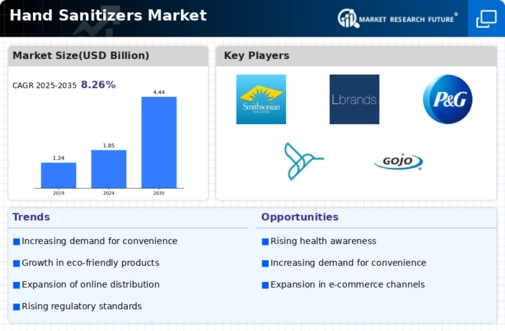


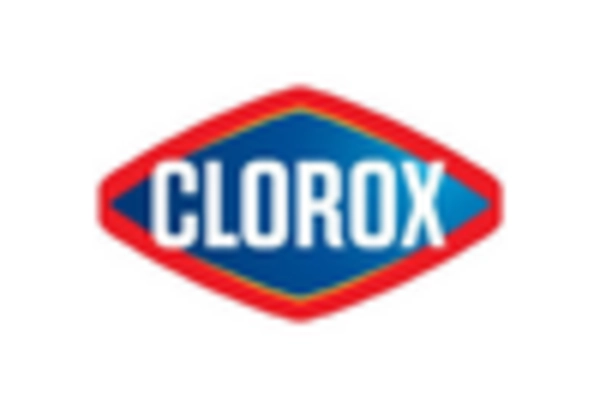

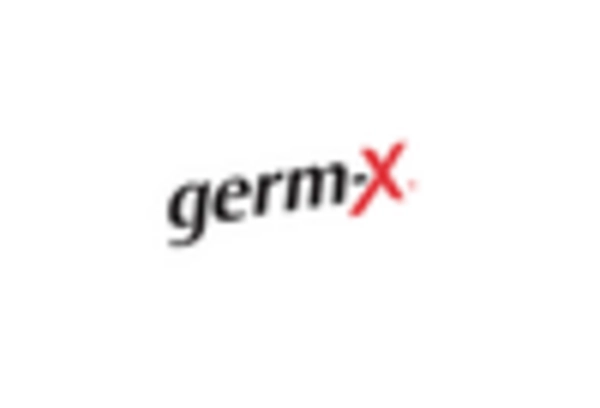
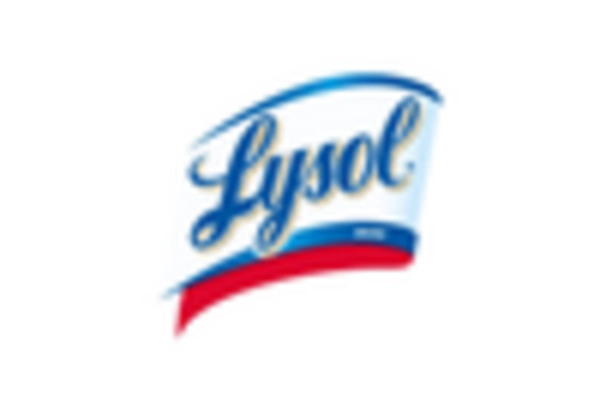
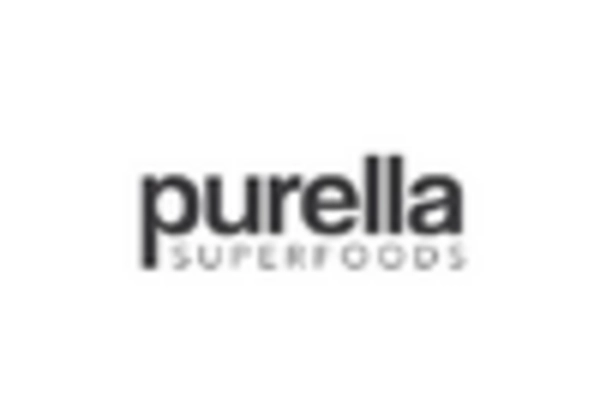

Leave a Comment